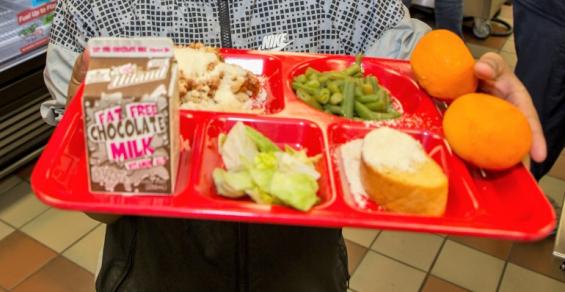Ag groups hope for productive discussion on improving the comprehensive food and agriculture systems.
The Biden administration will host the White House Conference on Hunger, Nutrition, and Health on September 28, in Washington, D.C. As the president announced in May, this will be the first conference of this kind in more than 50 years. The conference will bring government leaders, academics, activists, and Americans from all walks of life together to achieve the goal of ending hunger and reducing diet-related diseases in the U.S. by 2030 – all while reducing disparities among the communities who are impacted the most by these issues.
Millions of Americans are afflicted with food insecurity and diet-related diseases–including heart disease, obesity, and type 2 diabetes–which are some of the leading causes of death and disability in the U.S. Lack of access to healthy and affordable foods is one of many factors impacting hunger and diet-related diseases. The COVID-19 pandemic has exacerbated these challenges further, the White House said in a statement.
At the end of June, the National Milk Producers Federation led 11 national agricultural, anti-hunger, nutrition and medical groups in a virtual listening session urging the White House to place a high priority on access to affordable, diverse and nutritious foods at their conference. The NMPF-organized session offered the White House both expertise and lived experience from a wide range of organizations on how important increased access to food and a diverse range of food choices are to fight nutrition insecurity and improve nutrition-related health.
The White House says it will announce a national strategy at the conference that identifies actions the government will take to catalyze the public and private sectors to drive transformative change and address the intersections between food, hunger, nutrition and health. Last week the Task Force on Hunger, Nutrition, and Health released a 129-page document of recommendations and opportunities to improve the nation’s federal nutrition programs and health interventions.
“The September 2022 White House Conference on Hunger, Nutrition and Health has the opportunity to catalyze a new legacy for a 21st-century U.S. food system that is resilient, equitable, and nutrition-focused. Such a food system can help end hunger and advance well-being for the American people, reduce health care spending, support equity across identity and income groups, catalyze new jobs and small businesses, advance minority-owned businesses and rural development, enhance military readiness, and provide for greater security and prosperity for the nation,” the task force notes.
The recommendations offer 30 policy recommendations pertaining to federal nutrition programs, public health and nutrition education, health care, research and science, business and innovation and federal coordination.
Michael Dykes, president and CEO of the International Dairy Foods Association, says chief among the report’s key recommendations is the need to strengthen and expand nutrition incentive programs, especially those aligned with the Supplemental Nutrition Assistance Program, or SNAP.
“The International Dairy Foods Association and our members are committed to ending hunger and malnutrition while improving health outcomes and reducing diet-related chronic diseases by making it easier for all Americans to access healthy, affordable foods, including nutritious dairy products. In the 2018 Farm Bill, Congress authorized the SNAP Healthy Fluid Milk Incentives Projects (HFMIP) to double the dollars of SNAP participants when they purchase qualifying fluid milk and dairy products. As this pilot program expands to more retail outlets across the country, IDFA encourages Congress and the Administration to take the Task Force’s recommendations to heart,” Dykes says.
“Incentives are a prudent, proven intervention to increase access to and consumption of healthy food options, so let’s expand the Healthy Fluid Milk Incentives Projects, give it adequate funding to reach more SNAP participants across the country, and ensure it gathers and utilizes reliable data from retail and implementing partners,” he adds.
“The Dietary Guidelines underscore that 90% of Americans are not meeting the recommended intake of dairy foods, thereby under consuming several critical nutrients they need to grow and thrive, including potassium, calcium, and vitamin D,” Dykes continues. “As the task force report points out, it should be our shared goal to expand programs like the Healthy Fluid Milk Incentive Projects and others like it that prioritize removing barriers to bring wholesome, nutritious dairy and other foods to those who need them most.”
“Egg farmers have been donating their time and resources for years to combat hunger. We commend the White House for organizing the upcoming nutrition conference, and Congress for funding it. We must work together to end hunger in America,” says Chad Gregory, president and CEO of United Egg Producers.
“School meal programs are America’s most effective tool to expand children’s access to healthy foods to support their growth, development and academic success,” says School Nutrition Association Public Policy and Legislation Committee Chair Jessica Gould. “During the pandemic, we witnessed the adaptability of these programs as school nutrition professionals nationwide pivoted to provide grab-and-go meals for curbside pick-up and expand services for families in need. With research showing school meals are the healthiest meals children are eating, these programs should be a cornerstone in efforts to improve food access for America’s families.”
To learn more and join in taking bold action to end hunger and reduce diet-related diseases and disparities, visit whitehouse.gov/hungerhealthconference.




